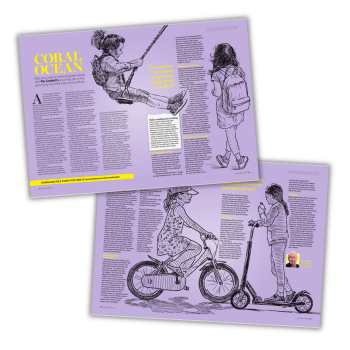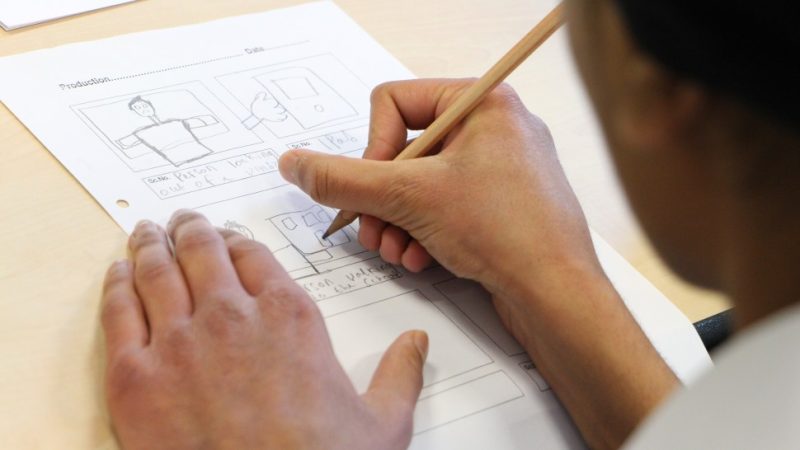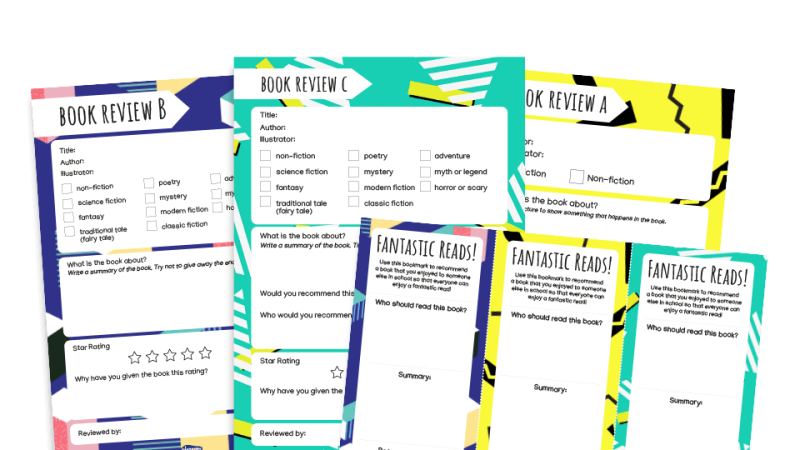Greater depth writing – What counts and how to teach it

What counts as greater depth writing, and how can you spot it, let alone teach it? Three experts share their words of wisdom…

- by Teachwire

How to teach greater depth writing in primary

It can be easy to forget our most promising writers – but they deserve better, says Felicity Ferguson…
When I was ten and new to secondary school, I wrote my first set homework assignment for RE. It was a recount of one of the seven plagues of Egypt. After a few days my book came back with the depressing comment: is this all your own work?
Mortified, because it was my own work and I’d written it like a story, with my usual enthusiasm and emotional investment, I approached the teacher on the pretext I hadn’t been able to read her comment.
“Well,” came the reply, “it was so vivid.” I said I had written it myself – but I could see she didn’t believe me. To this day I still feel the injury to my early strong sense of me as a writer, and the need I had to own and assert my ‘talent’.
Natural drive
As a pupil I would have qualified as a ‘greater depth’ writer. I had a natural drive to write from an early age. I wrote from desire, with pleasure, absorption, satisfaction; it was an act of escapism.
“I said I had written it myself – but I could see she didn’t believe me”
At home was where I did a great deal of writing. There were stories, unfinished novels, programmes for shows put on in a friend’s backyard. I even edited my own magazine. My memory is that in those days teachers never asked us to do any of these different kinds of writing in primary school.
Luckily for me, my intrinsic motivation was strong enough to carry me through as a writer into my adult life. But this may not be the case for all children who are capable of writing at greater depth if we don’t foster their motivation and therefore their pleasure.
Adverse effect
I have recently known several pupils who were clearly outstanding as writers. They were all highly motivated, persistent, committed and self-regulating, and all wrote extensively and with pleasure at home.
The small body of research on the subject stresses the importance of the environment if children are to maintain the desire to write to a high standard – parents, teachers and the home and school ethos. However, it suggests that some classroom strategies could actually have an adverse effect on their motivation.
So what kind of teaching would be the most valuable for talented writers? Do we in fact need to do anything to support them? Or, with the demands of getting other less-experienced children to the ‘expected standard’, is it enough to praise and showcase their writing but then leave them to their own devices, trusting that they will always write something good?
“Some classroom strategies could actually have an adverse effect on their motivation”
My view is that it’s not. Like everyone else, they need good teaching and writing that challenges them. Here are some ideas.
Make a classroom community of writers
Here, you share writing by teachers and pupils alike. You discuss and respond to in a safe and positive atmosphere where all are seen as writers.
A talented writer, like anyone else, needs to feel part of important social structures such as these, where children learn things of value from each other.
Teach the writing processes
Being explicitly taught the writing processes means that confident, talented writers become free to think about how they can personalise their approach and develop their voice.
Many professional writers have reflected on their processes, and these reflections could be shared and discussed.
Create purposeful, authentic writing projects
Children will be engaged and motivated if writing projects are felt by them to be relevant to their lives and existing knowledge. In other words, they need to have personal meaning for them.
Putting their own idea into the genre being studied immediately creates an authentic purpose and a personal connection to the writing.
Give time, space and freedom
Writing daily and having agency to write on topics of their own choice, for their own purposes and at their own pace is the key to motivation, efficacy and pleasure.
The opportunity to write in this way at school may resemble the experience of writing at home. This is where much of talented pupils’ most creative, varied and successful writing often takes place. Having time and space daily allows them to practise and improve their craft.
This, and the teacher’s interest, contributes to a writer’s sense of self as someone engaged in important work. However, this won’t be maintained if children are constantly forced into writing to someone else’s design.
A diet of teacher-chosen topics may affect motivation adversely. It will certainly result in the writer losing the feeling that writing is a real-world activity, has a personal point and is purposeful.
Become a writer-teacher
A writer-teacher (a writer who teaches and a teacher who writes) is well-placed to nurture talented writers. A teacher’s engagement in personal writing works to sustain pleasure, motivation and tenacity in the students. It also makes it possible to share difficulties, give advice, suggest strategies and provide immediate feedback at a high level.
Read and write for pleasure
These two are strongly interconnected. Talented writers are likely to be committed readers, but it is still important to provide them with a rich and eclectic classroom library based on the teacher’s knowledge of children’s literature and peer recommendations.
They need to feel part of a community of readers, with time to talk with others about their reading. We know that children who read more write more and better, using their reading, often unconsciously, as mentor texts.
Teachers need to use children’s reading experiences and take advantage of the many opportunities to show them how to link their writing to how their current favourite book is written. Plant an idea. Say, “You could do something like that…”
Freedom and space
Will my talented writers write with the same desire and pleasure as they progress through the education system? I don’t know.
Maybe they will, if there can be a balance between the demands of the curriculum and assessment practices and the freedom and space to write with ease and engagement on self-chosen topics.
- Develop and use their own preferred writing processes.
- Take part in writerly talk about craft and process.
- Experiment with narrative structures, point of view, chronology and flashback. Try cinematic devices such as ‘zooming in’, or using a wide-view ‘lens’ to set a scene.
- Be playful with genre – for example, by combining a narrative with persuasion or explanation.
- Introduce their own voice into non-fiction pieces and express a personal response.
- Notice in their own reading what writers do, and draw on it in their own writing.
- Balance character, setting and plot. Develop settings as additional characters.
- Build a story around a psychological theme, e.g. fear. Use a character as a metaphor for the theme, idea or emotion.
- Bring writing from home into school and use it to influence school writing.
- Collect in a notebook striking words, phrases and sentences culled from their reading and their social lives, to use in their writing later. Show them yours!
- Revise their pieces thoroughly, taking out rather than always adding in.
Felicity Ferguson is a literacy consultant and a national writing representative for The UKLA.
How to spot greater depth writing in Year 6

The holy grail for writing assessment, we’re all looking for evidence of greater depth. But what is it, and how do you know when you’ve found it, asks Daisy Christodoulou…
- “It can’t be greater depth – the spelling isn’t good enough.”
- “This isn’t greater depth because it lacks control.”
- “It’s a good piece of writing, but the tense is inconsistent, so it’s not greater depth.”
These are the conversations we are used to having when it comes to primary writing and whether it reaches the greater depth standard (GDS) or not.
On the surface, these three statements seem straightforward. The primary writing framework requires students to:
- spell most words correctly
- exercise assured and conscious control of their writing
- use verb tenses consistently
If a piece of writing doesn’t meet one of these standards, it cannot be greater depth.
What is greater depth?
Except, of course, it isn’t that simple. Take the statement ‘exercise an assured and conscious control over levels of formality, particularly through manipulating grammar and vocabulary to achieve this’.
Reasonable people could disagree about what that means. Consider the following sentence: ‘The devious spirit towered over the dead corpse.’ One teacher on Twitter said a moderator used this sentence as evidence of a student lacking control. This was because a corpse is obviously dead.
But another moderator might argue that one small tautology should not affect the judgement of a piece of writing that does broadly display control.
What about statements to do with spelling most words correctly and using tense consistently? Surely these are more objective and easier to interpret? Not necessarily.
What if a student repeatedly spells a very difficult word incorrectly? Does that disqualify them from getting greater depth? Does it mean that a student who spells everything correctly but uses much more basic vocabulary is more deserving of greater depth?
“What if a student repeatedly spells a very difficult word incorrectly?”
What if a student writes a story about time travel that requires very complex manipulation of different tenses?
It could be argued that I am being pedantic, splitting hairs and coming up with hard cases that are not typical of most student writing. To see if I am, let’s look at the data.
If the primary writing framework really is easy for teachers to understand and interpret consistently, then we would expect to see most teachers who use it agreeing in their judgements. The evidence we have suggests this is not the case.
Marking inconsistencies
At No More Marking, we carried out a study where several experienced markers independently assessed a set of 349 Year 6 scripts. Seven per cent were graded as greater depth by at least one marker. But only one per cent were graded as GDS by both markers.
This is not just a problem with the primary writing frameworks, either. There is a large amount of international research literature on the consistency of mark schemes. This shows that no scheme in history has produced precise agreement on open tasks like writing.
Hardworking, honest, experienced and well-intentioned markers will not always agree on the mark a piece of writing deserves. So why do experienced markers disagree in this way? A lot of the time, we think that disagreement is down to more-or-less lenient interpretations of the mark scheme.
“No scheme in history has produced precise agreement on open tasks like writing”
For example, we can assume that someone has a harsher interpretation of the mark scheme, and someone else a more generous one. We then think that the challenge is to decide which marker is correct, or whether the correct judgement is somewhere in between the two.
Levels of generosity are certainly an important factor. But another important and overlooked factor is inconsistency. Markers disagree with each other, certainly. But very often, they disagree with themselves.
In one study exploring inconsistency, markers were given a certain batch of essays one year, and another batch the following year. What they didn’t know is that two of the essays in the first batch were also included in the second batch.
Did the markers give those two essays the same mark the second time round as they did the first? Eighty per cent of the time they did not.
‘Owning’ greater depth
Markers are inconsistent and they make errors. This is not because they are bad or stupid or lazy: it is because they are human! Human judgement in all kinds of different fields is subject to inconsistency. This is nothing to be ashamed of. It’s better to be honest about our limitations than to pretend they don’t exist.
It’s important to acknowledge the inconsistency of markers. We need to move away from the idea that somewhere out there is a marker or moderator who ‘owns’ greater depth.
“Human judgement in all kinds of different fields is subject to inconsistency”
There isn’t. Some people may think their judgements about greater depth are always correct. However, to believe this, they’d have to pass an empirical test. They’d have to mark 100 portfolios one day, and then come back a month later and mark them all again, and give them all the same mark both times.
If mark schemes and human judgement are so imprecise, what should we do instead? Two important principles can help improve the situation.
Aggregation and exemplification
The first is aggregation. Individual human judgements are subject to error, but if we aggregate together lots and lots of independent judgements, the errors cancel each other out.
The second is exemplification. As we’ve seen, the kind of prose statements you get on a mark scheme are quite vague and often provoke disagreement.
By using actual examples of writing that is and is not at the greater depth standard, we are more likely to get agreement. At No More Marking, we use a technique called comparative judgement to assess writing with much greater consistency than the traditional framework approach.
Every single piece of writing is assessed at least 20 times, and the process provides a powerful bank of exemplars at every standard. You can see 349 of our Y6 scripts from 2020 here.
Daisy Christodoulou is former head of assessment at Ark Schools, and currently director of education at No More Marking, a provider of online comparative judgement. She is the author of Seven Myths about Education, Making Good Progress? The Future of Assessment for Learning, and Teachers vs Tech.
What counts as greater depth writing?

It can be difficult to put your finger on it, but there are a few critical indicators, says Tim Roach…
It’s perhaps easier to say what greater depth is not. It doesn’t inevitably apply to any child who was level 3 (or greater depth) at KS1. And just because a child can write pages of flawlessly punctuated prose in copperplate cursive, it doesn’t mean that they’re automatically ‘greater depth’ either.
So what is ‘greater depth’? Quite often, you just know when you read it aloud (which is what my fellow moderators and I spend most of our moderation visits doing). But aside from the teacher assessment framework, there are a few critical indicators of a ‘greater depth’ writer.
Concision
Concision is key. The old adage ‘less is more’ can be applied to greater depth writers. We’ve all taught pupils who – as wonderful as their writing might be – could never seem to reach the end of their story.
This can reveal their neglect of forward planning. Excellent writers will instinctually vary the length of their sentences when the writing calls for it. They’ll have the confidence in their short sentences to leave them be; they don’t just write the next thing that comes into their heads.
The ability to self-edit their writing and remove extraneous content or exposition should not be underestimated.
Punctuation
Punctuation should be precise and controlled, but also used for effect rather than a conspicuous opportunity to shoehorn some semicolons into proceedings.
Commas and parentheses allow the writer to inject carefully considered clauses or deft asides. Dialogue gives pupils scope to demonstrate their mastery of a great range of the punctuation prescribed by the national curriculum and beyond, such as the dash and ellipsis.
Vocabulary
Thirdly (and arguably the most influential factor), the evidence that they draw from reading quality literature – literally spelt out in the framework as ‘drawing independently on what they have read’ – discloses the writer to be a prolific reader.
A pupil’s wider vocabulary and its appropriate use; the use of fitting metaphors; other imagery; their intuition for dialect or realistic speech patterns; the way their writing ‘flows’: these elements illustrate a young writer’s appetite for absorbing books and emulating the original authors’ styles.
Individually, these factors are difficult to distil down to fit into a manageable tick list. Apart from using a tool like comparative judgement, one of the easiest ways that you can achieve greater reliability in your identification of ‘greater depth’ is to cross-moderate between schools in your locality, diocese or MAT.
As well as being an indispensable CPD activity for teachers, this collective forum enables you to more effectively gauge your pupils’ writing against a wider sample.
Tim Roach is a Y6 teacher at Greenacres Primary, Oldham. Follow him on Twitter at @mrtroach.
How to help pupils draw on the rich language they need

If children aren’t lucky enough to have a deep well of great literature stored in their heads, you can still help them draw on the rich language they need, explain Lindsay Pickton and Christine Chen…
Its claws scraped along the planks, moving menacingly towards the heady scent of the distracted goat. Only the crows noted its brutal form stalking across the beams of the bridge, sensing the quickening rhythm of its breath.
We wrote that. We were preparing for some collaborative composition work based on The Three Billy Goats Gruff, and we wanted to really ramp up the suspense around the troll.
A lot of help
We’re not writers of fiction, so we’re quite proud of the outcome. However, we did have quite a lot of help with the shape of it: have a look at the eerie opening of Gillian Cross’s excellent Wolf and you’ll see just how much help we had.
His feet padded along the balcony, slinking silently past the closed doors of the other flats. No one glimpsed his shadow flickering across the curtain or noticed the uneven rhythm of his steps.
Thank you, Gillian Cross.
The troll came to the far side of the bridge. A wicked wind whipped around its brutal form. Not for months had the beast smelt a living creature like this one. It inhaled the strong scent that swirled deliciously around its snout.
That’s ours, too. This time, thank you Ted Hughes for writing one of the most memorable character entrances of all time in The Iron Man.
And it’s not just KS2 texts that help us.
Although Willy was the smallest billy goat in the herd, he had the biggest horns. The thing was, he didn’t use them. He never fought.
That’s strongly influenced by Susan Hellard’s wonderful Baby Elephant, often enjoyed in Y1. It’s a marvellous way to introduce a characteristic you know is going to drive the narrative arc. Thank you, Susan Hellard.
What fuels good writing?
The best writers are immersed in – and have a deep appreciation of – the craft of other writers.
Like so many teachers, we have tried to teach children to write effectively with tips, tricks and grammatical devices (“start with an adverb, start with an -ing, use these conjunctions, use a short sentence…”) but even when this goes well, not all outcomes are as good as those of the best writers – the ones we often erroneously refer to as ‘natural writers’.
They just seem to know how to do it more effectively, with better vocabulary choices and a naturalistic way of selecting sentence structures.
Language is acquired through imitation; the best writers are avid readers. You can even see this when you look at – or listen to – the composition of young pre-readers: you know pretty quickly which children have already got a head full of stories and, therefore, wonderful language models.
Of course, the idea of imitating and then innovating from the language of a story isn’t new, and it’s the essence of Pie Corbett’s transformative Talk for Writing. But even where schools are flying with this, the ‘natural writers’ soar higher.
Why? Because they combine the whole-class model with the treasure trove they have crammed in their heads from all their lucky literary experiences.
The Teacher Assessment Frameworks recognise this in the descriptors for Greater Depth writing at KS1&2. The KS1 TAF refers to children “drawing on their reading to inform the vocabulary and grammar of their writing”; at KS2 it’s “drawing independently on what they have read as models for their own writing”.
Modelling structure and language
Our Billy Goats Gruff examples are taken from our English sequence in which the original story provides a solid model for text structure. Additionally, we introduce opportunities to relish, assimilate and synthesise wonderful models for language.
We would keep referring to the text structure of the Billy Goats story, but relish the first pages of Baby Elephant, luxuriate in the Wolf or The Iron Man openings to introduce the troll, and so on.
This is what the potential Greater Depth (GD) writers are doing. They aren’t limited to the whole-class model for their language; they are dipping – possibly unconsciously – into their internal libraries to find appropriate language and structures.
So many children lack that internal bank; let’s give them an external one, and guide them through the process, very gradually releasing them into their own independent selection of language models.
Our process goes like this:
Planning:
Think about the section of the story to be written in a given lesson; what effect are you after? Find brilliant writing that achieves that effect, and notice how it’s achieved.
Practise synthesising the content of the story-to-be-written with the language of the genius model. (This is for practice only; we don’t show this to the children.)
In-lesson:
Display the brilliant model-for-language on your IWB and lead a shared-write on a flipchart, demonstrating how to synthesise the model with the scene being written by the class. (E.g. “Ted Hughes has written, ‘The wind sang through his iron fingers.’ In our scene, the mood is more threatening, so how can we give the weather more menace? And ‘sang’ is too beautiful… Which part of the troll’s body could we have the gail buffeting?”)
Remove the shared-write from view.
Leave the rich language model on the board (on their desks, too, maybe).
Children make their own adaptations, independently or collaboratively, having been shown how through the shared writing process.
Building a language bank
Two huge advantages of this approach quickly become apparent: the children’s outcomes are enriched, and the shared writing process is significantly easier.
The challenge inherent in this approach is having a big enough bank of brilliant snippets. We can make recommendations, but 20 heads are better than two, so in the schools in which we work we always recommend building a shared bank of wonderful examples of writing that achieve specific effects.
What if everyone in your school, federation or alliance took responsibility for this and whenever they read something – alone or with children – that made them think, “That’s a great opening/ending/character introduction/chase scene/example of dialogue-that-moves-the-story-on…” they banked it under a heading? Then, when a colleague needed a great example of dramatic tension or simply some gorgeous description of setting, there it is.
Christine Chen and Lindsay Pickton are primary education advisors (primaryeducationadvisors.co.uk), supporting English development nationally.











